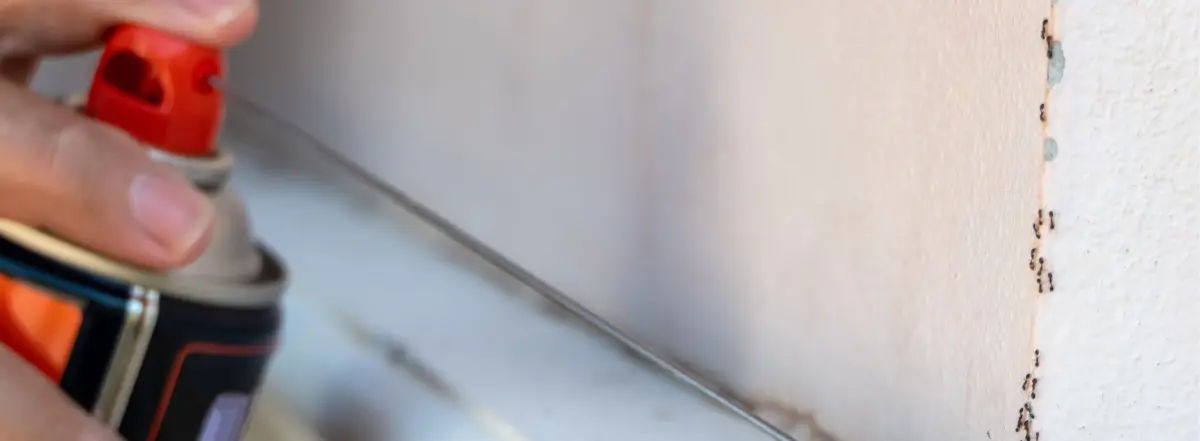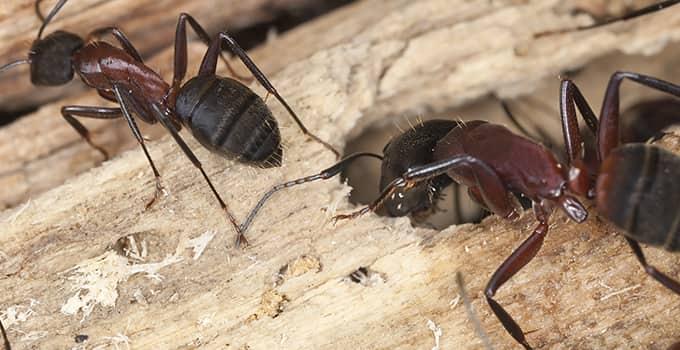Most Important Things To Understand About Carpenter Ants
Carpenter ants are one of the most misunderstood ants that invades homes. Part of this misunderstanding comes from how different they are from other ants in terms of habits and habitat preferences. It also has to do with its appearance. Since most people know that carpenter ants are usually black, they often get confused with little black ants. Let’s see if we can shed some light on the matter.
What Does A Carpenter Ant Look Like?
If you see little black ants roaming through your home, and if there are lots of them, these are not carpenter ants. However, if you see 1, 2, or a few very large black ants here and there, these are likely carpenter ants. Worker carpenter ants can be as large as 13 millimeters long and are mostly black, although colors vary among species. Some are jet black, others are dark brown, red, black, yellow, orange, yellowish, tan, or light brown. One good way to distinguish carpenter ants from other ants is that these ants have a single, pointed, node between their thorax and abdomen. The workers of these ants have large mandibles used for digging out tunnels and galleries inside wood. Carpenter ants are also the largest ant that invades homes.
Damages: Bad
When carpenter ants invade a structure, they will begin eating away at it from the inside out. Only, unlike termites, they do not actually eat the wood, they simply remove it. Because of this, you may be able to see kick-out holes with piles of sawdust (frass) underneath. Often these tiny holes, and piles of frass, are in hidden locations such as inside wall voids or in crawl spaces. So damage can be done right under your nose for years without anyone taking notice.
Damages: Worse
If enough time is allowed to go by, and carpenter ants are eating away at your home or business year after year, the very structure of your building may begin to warp. This can cause windows and doors to stop working properly. They will stick open or shut, or simply won’t move as smoothly as they once did. There may start to be a noticeable slope to floors, sag to ceilings, and bulge to walls. Of course, this kind of damage will also become apparent with a severe termite infestation.
When Are Carpenter Ants Most Active?
Outside, carpenter ants are most active during the warmer months of the year. They infest old tree stumps, woodpiles, and anywhere else they can burrow into wood to build tunnels and galleries in which to create nests. In springtime, this is the time of year when ant colonies will create swarmers (or winged reproductives) that set out from the old nest in search of mates and a new home. Once established, this new nest will grow its populations quickly in the warmer months. Then when temperatures drop, carpenter ants, outside, will slow down. And if temperatures drop low enough, they will burrow deep into the ground and go into a sort of hibernation called “diapause.” So, while ants tend to disappear during the winter, this isn’t so for the carpenter ants that have gotten into heated structures.
Inside, if carpenter ants are digging away at your support beams, walls, and other wooden areas, they can keep right on going through the cold months as long as there is heat emanating from the structure.
Tips Homeowners Can Use Throughout The Year To Keep Carpenter Ants Away
- Examine the outside of your foundation and walls, searching for gaps, cracks, or holes. When you find them, seal them up using a caulking gun, or some other form of sealant. It only takes a tiny gap for ants to squeeze through.
- Eliminate smells that lure pests close to your home. If you keep garbage cans outside, make sure they have tight-fitting lids to keep smells in and pests out.
- Inside, keep food stored inside the fridge, freezer, or in tightly sealed containers.
- Only put pet food down at meal times or covered when pets are not eating.
- Keep your home or business free of food crumbs and spills that make an easy meal for any kind of ant.
- Partner with a professional pest control company.
Reach out to Schendel today to learn more about our residential pest control services. Carpenter ants don’t fix anything, but will severely damage your home if they are not stopped.








